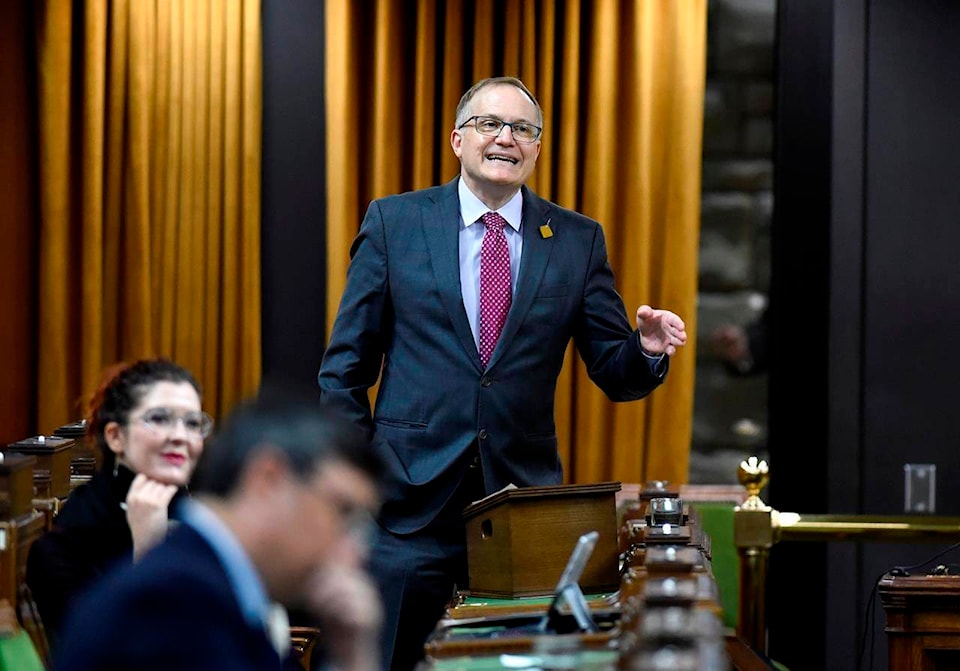The NDP is calling on the federal government to claw back pandemic wage subsidies handed to companies that took advantage of the cash to boost executive compensation, but economists say other paths to worker support may mark a more feasible route.
In a May 13 letter to Finance Minister Chrystia Freeland, New Democrat Peter Julian said all publicly traded companies that received the Canada Emergency Wage Subsidy (CEWS) should repay any bumps in salaries and bonuses for senior management.
“The wage subsidy was clearly supposed to go to workers and toward protecting Canadians’ jobs — not bonuses for top corporate brass,” the letter states.
“In a case where there’s a clear violation of what the clearly stated goals of the program were, it is absolutely appropriate to ask for that money back,” Julian said in an interview.
Though Freeland has repeatedly said the subsidy can only be used to pay employees, nowhere does it bar beefier executive compensation as a condition of that support.
Julian also criticized Ottawa for failing to add caveats restricting share buybacks and higher dividends.
Last year, hundreds of chief executives and senior managers enjoyed millions in dividends paid out by publicly listed firms that also gobbled up hundreds of millions from the CEWS program, which provides a subsidy of up to 75 per cent for payroll expenses and is estimated to cost $110.6 billion.
The NDP finance critic slammed the government for its “aggressive” moves to crack down on abuse of the Canada Emergency Response Benefit, intended to help Canadians who lost work during the COVID-19 pandemic.
“They’ve been putting pressure on people who received CERB, even when they were the victims of fraudulent behaviour by other people. But they have not stepped up and given any indication at all on the wage subsidy. And that’s simply wrong,” he said.
Freeland’s spokeswoman, Katherine Cuplinskas, stressed that the program aims to protect jobs, saying it has helped more than 5.3 million workers stay on payroll or get rehired.
CEWS, which she noted received unanimous approval in the House last July, “applies to businesses of all sizes and across all sectors to ensure that no worker falls through the cracks,” she said in an email.
Smaller retailers and the entertainment, tourism and aviation sectors reeled amid lockdowns over the past 14 months, but big-box stores, tech companies and transport firms fared well as remote work and online delivery ramped up.
Many countries introduced bans on dividend payments and other rewards within months of the first wave. Spain demanded full reimbursement of job-retention funding for companies that paid any dividends. The Netherlands imposed a ban on dividend payments, share buybacks and bonuses for executives at companies that took advantage of wage relief in the same year.
Last month’s federal budget extended the wage subsidy through September, but with a new clawback system for jacked-up executive compensation at publicly traded companies — a step the NDP now wants applied retroactively.
David Macdonald, a senior economist at the Canadian Centre for Policy Alternatives, says a tax rule effectively forcing reimbursement from companies that declared profits while receiving the subsidy might offer a simpler, if blunter, solution.
“The federal government can certainly change the tax rules. And they can do it retroactively if they want to,” he said.
Ottawa could also tighten the new clawback measures by including dividend boosts and share buybacks among the repay items. “There’s $25 billion that’s going to be paid out in this fiscal year, starting April 1. So there’s still time, the program’s not over.”
University of Toronto economist Michael Smart says a future program overhaul makes more sense than retroactive clawbacks, and suggests the federal government limit the subsidy to small businesses and battered sectors or apply it only to at-risk jobs.
“Any company that issues stock on the Toronto Stock Exchange does not need the government to step in,” he said. “We’ve got to get back to a focus on workers and Canadians who are experiencing income losses.”
Smart called it a “mistake” to zero in on clawbacks, highlighting potential loopholes.
“If the government were to pass a rule that CEWS gets clawed back from any company that increases dividends this year, then as the CFO of a company I would know exactly what to do: Don’t pay out a special dividend this year; pay out a special dividend next year,” he said.
“All it does is it takes the heat off of Ottawa.”
While Canadians may be “surprised or shocked” that emergency funds landed at companies that promptly lined the pockets of their C-suite staff, “that’s a tiny fraction of the overall issue of this program,” he added.
Starting in June, the revised CEWS program will raise the eligibility threshold to 10 per cent revenue loss relative to the same four-week period in 2019. A progressively lower subsidy rate as September approaches is also part of the plan.
“This money should be going to people who actually need it, businesses that actually need it, to try to stay afloat for hopefully what’s just the last few months of the pandemic,” Macdonald said.
Like us on Facebook and follow us on Twitter.
Want to support local journalism? Make a donation here.
